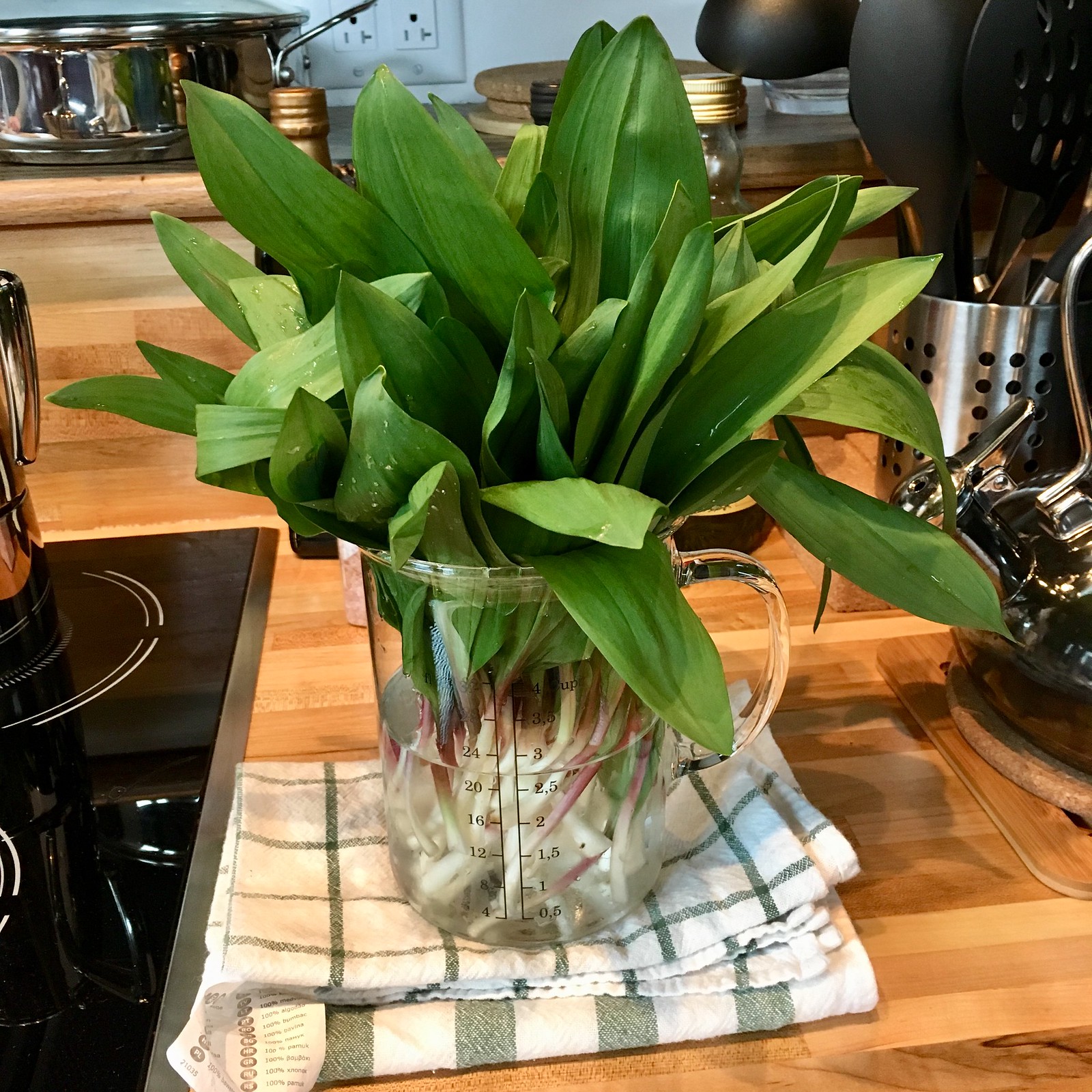I've eaten ramps at restaurants and bought them at the Farmers Market to take home and make. But this week, we had good success finding ramps in the wild (and in areas where harvesting them is permitted.) The first batch, I turned over to our landlords (they felt sorry for me because I was upstate alone while my wife was at court) to make a shrimp and ramp fettuccine, which was great. Today we found another patch and took some of them home to make pesto. I really think pesto is the perfect ramp dish - very simple and tastes super fresh. Our recipe is from our Czech friend Marek who makes huge amounts and freezes it for winter when spring seems distant. Fortunately he is not selfish and gives us another "dose" every time he visits.
Ramps grow as a patch of interconnected plants, a lot like irises (though ramps are an allium,) so when you harvest them, it is a good idea to leave as much of the subterranean plant intact. If you can, dig them with your hands, clearing away leaves to see where the stem goes into the ground and at what angle. As you dig the plant out, follow the stem until you come to the (often small or indistinct) swelling or bulb at the bottom of the plant and use a sharp knife to cut the plant away from its roots. Based on how they grow, I try to take less than 50% from patches so the plants left will reconstitute the patch next season. And I fill any hole back in and re-cover the spot with leaves.
To make pesto, just wash all the dirt off the plants and cut off any stray roots or dead sheaths over the bulb. I prefer not to blanch the ramps. Left raw, ramps fill the role of garlic and basil nicely - and then some. Lightly toast either pine nuts (traditional) or walnuts (earthier), then squeeze a lemon and grate a bit of peel. Add ramps to a food processor with the nuts and the lemon juice (keeps the pesto green if stored.) Just like any pesto, blend and taste and add and blend and taste until you have the right balance, adding salt and pepper to tune up the taste a bit, and then a small amount of grated lemon peel. Leave off the parmesan unless you are going to make a batch that will be eaten entirely as pesto without parmesan stores and/or freezes better. Pick a nice pasta (the kind made with bronze dies are best because the surface has plenty of tooth to hold the pesto) for pesto in whatever shape - thicker spaghetti, penne, fusilli are good - cook, drain and then add enough pesto to coat every piece thoroughly. Top with parmesan if you haven't added it in. Or even if you have. Parmesan is not a sin.
So that's what I do. I am likely doing it differently than other people, so chime in with techniques, facts and recipes. Please!


 Likes:
Likes: 




 Reply With Quote
Reply With Quote




Bookmarks